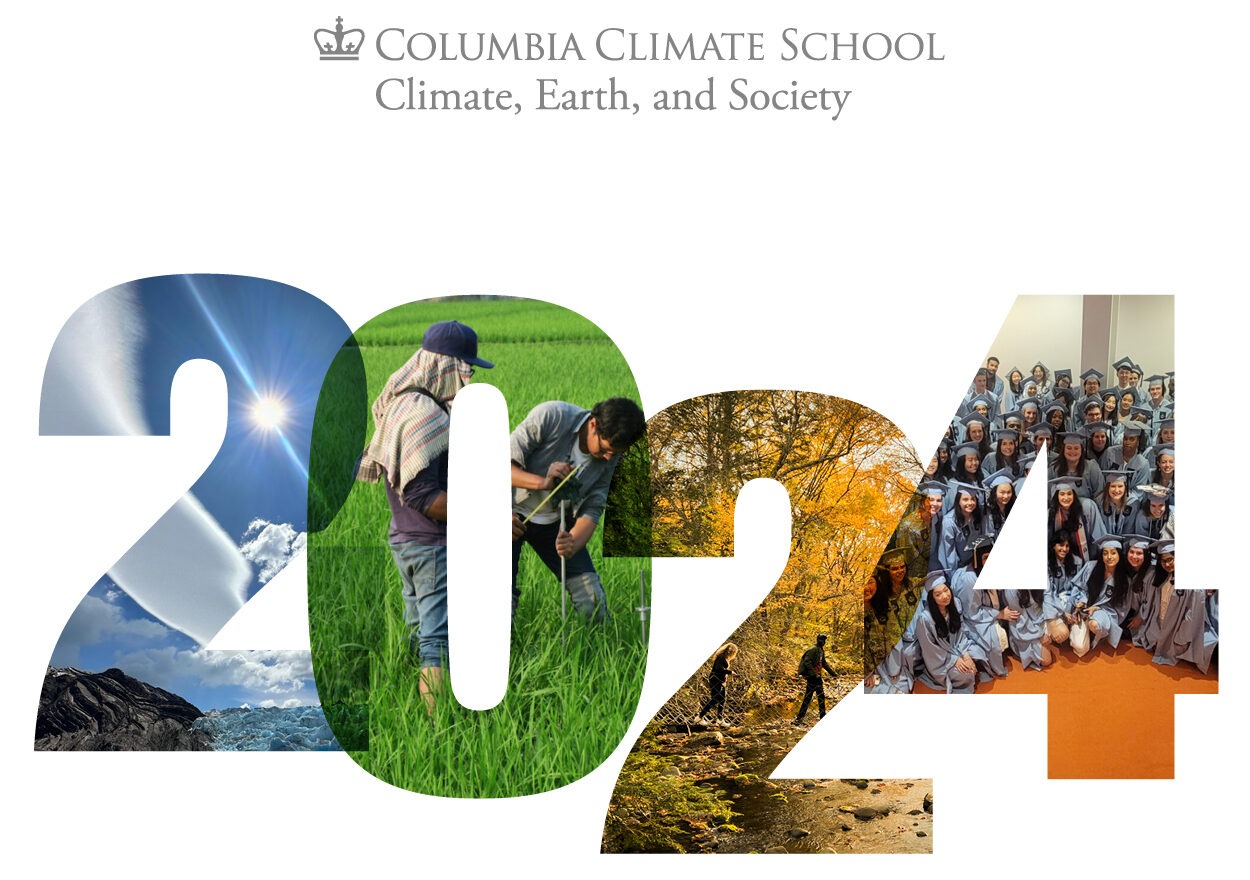2024 was another record-breaking year—global temperatures continued to rise; an especially active hurricane season left a trail of destruction in the U.S; catastrophic floods rattled Spain and Central Europe; and wildfires decimated parts of North and South America—to name just a few of the headlines.
But it was also a year filled with exciting opportunities for collaboration, bringing together people from diverse fields within academia, policy and research, alongside community members, to discuss new ways to combat, mitigate and prevent the effects of climate change during Climate Week NYC, COP29 and the World Water Film Festival, among other initiatives. For the first time in almost nine years, the seismic vessel R/V Marcus G. Langseth also made a stop in New York City for some much-needed TLC, inviting visitors on board for a demonstration of the ship’s invaluable research efforts.
Here at the Climate School, we celebrated our graduating class of students, who will now contribute their education and experiences to building a better world. We also recently announced the launch of a new M.S. in Climate program for young and mid-career professionals and future academics who want to become climate leaders at community, state, national and international levels. And at State of the Planet, we published hundreds of stories on the current, past and future climate, as well as the individuals who help us understand and work toward a more sustainable and equitable future. You can read a short roundup of our most viewed articles below.
Some of our most popular posts from 2024
Bottled Water Can Contain Hundreds of Thousands of Previously Uncounted Tiny Plastic Bits, Study Finds: In a groundbreaking study, scientists were able to use a new technique to identify extremely minute plastic fragments in bottled water—10 times more than previously we previously assumed. If you want to find out how much you really know about this “material of a thousand uses,” you can also take our plastics 101 quiz.
Unexplained Heat Wave ‘Hotspots’ Are Popping Up Across the Globe: Distinct regions are seeing repeated heat waves so extreme, they cannot be explained by climate models. A study provided the first worldwide map of such regions, which show up on every continent except Antarctica.
Cascadia Subduction Zone, One of Earth’s Top Hazards, Comes Into Sharper Focus: In areas where tectonic plates collide off the coasts of the western United States and Canada, giant earthquakes and tsunamis occur. The last one was 324 years ago. When will we see the next one?
Solar Geoengineering To Cool the Planet: Is It Worth the Risks? Once considered a crazy idea, solar geothermal engineering is gaining acceptance in some circles. But it’s not without drawbacks.
An Earthquake Changed the Course of the Ganges. Could It Happen Again? 2,500 years ago, an earthquake changed the course of the mighty Ganges River, a new study shows. The region remains vulnerable to a similar event now.
Protecting Our Planet: 5 Strategies for Reducing Plastic Waste: Think global, fight local: Some tips to reduce your plastic footprint.
How Climate Change Impacts Renewable Energy: Because renewable energy sources depend on the environment, both the supply of and demand for renewables are affected by climate impacts such as high heat, drought, altered precipitation patterns, flooding, extreme weather and wildfires.
Twelve Years After Sandy, Have We Gotten Better at Preparing for Disaster? Jeffrey Schlegelmilch, the director of Columbia’s National Center for Disaster Preparedness, reflects on applying lessons from Hurricane Sandy to more recent disasters.

Video Highlights
This year, we added new stories to our Science for the Planet video series, which features short explainers from Climate School researchers who are learning about the impacts of climate change.
That’s all for now. See you in 2025!
Source link
Columbia Climate School news.climate.columbia.edu

